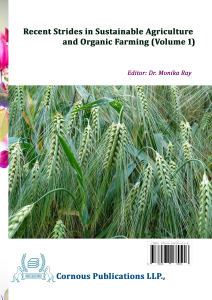Greenhouse technology is vital to modern horticulture, enabling controlled-environment agriculture to enhance productivity, quality, and sustainability. This chapter explores greenhouse cultivation's evolution, principles, and applications, emphasizing its role in the horticultural sector. It examines the historical development of greenhouses, from ancient Roman practices to modern high-tech structures, along with advancements in materials and environmental control mechanisms. The economic aspects of greenhouse farming, including construction costs, operational expenses, and profitability, are analyzed to highlight its feasibility for high-value crop production. The chapter also reviews the present status of greenhouse farming in India, focusing on technological advancements, market trends, and government initiatives that support farmers through subsidies for polyhouse construction. Despite its benefits, greenhouse farming faces challenges such as high initial investments, the need for technical expertise, and climate-specific design considerations. However, emerging innovations, including automation and AI-driven precision agriculture, offer promising solutions for enhancing efficiency and affordability. By examining the principles, economic viability, and future prospects of greenhouse cultivation, this chapter underscores its transformative potential in ensuring food security, resource efficiency, and sustainability in modern agriculture.
Controlled environment agriculture, Greenhouse technology, Precision horticulture, Protected cultivation, Sustainable agriculture
Acosta, L., & Tapia, L. (2020). An analysis of global research trends on greenhouse technology. Agronomy, 10(2), 281.
Food and Agriculture Organization (FAO). (2020). Protected cultivation: A global review. Rome: Food and Agriculture Organization of the United Nations.
Government of India. (2023). Horticultural statistics at a glance 2023. New Delhi: Ministry of Agriculture & Farmers Welfare.
Indian Council of Agricultural Research (ICAR). (2015). Vision 2050: Horticulture. New Delhi: ICAR.
Kumar, P., et al. (2021). Precision farming in horticulture: Advances and future prospects. Scientia Horticulture, 276, 109760. https://doi.org/10.1016/j.scienta.2020.109760
Minter, S. (2000). The apothecaries' garden. Sutton Publishing.
Nemali, K., & van Iersel, M. W. (2022). Greenhouse technology for controlled environment crop production. Horticultural Reviews, 48, 1–44.
Singh, H. P., & Peter, K. V. (2013). Hi-tech horticulture. New Delhi: New India Publishing Agency.
Singh, R., Kumar, P., & Gupta, R. (2024). The role of greenhouse technology in streamlining crop production. Journal of Experimental Agriculture International, 46(6), 776–798.
Stanghellini, C., van’t Ooster, B., & Heuvelink, E. (2019). Greenhouse horticulture: Technology for optimal crop production. Wageningen: Wageningen Academic Publishers.
von Elsner, B., Briassoulis, D., Waaijenberg, D., Mistriotis, A., von Zabeltitz, C., Gratraud, J., Russo, G., & Suay-Cortes, R. (2000). Review of structural and functional characteristics of greenhouses in European Union countries: Part I, design requirements. Journal of Agricultural Engineering Research, 75(1), 1–16.
Yoon, S. J., & Woudstra, J. (2007). Advanced horticultural techniques in Korea: The earliest documented greenhouses. Garden History, 35(1), 68–82.
Zhang, Y., & Wang, S. (2023). A critical review of the status of current greenhouse technology in China and abroad. Applied Sciences, 14(13), 5952.
